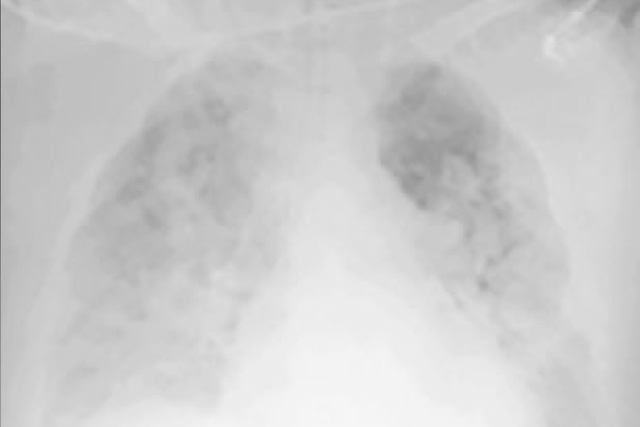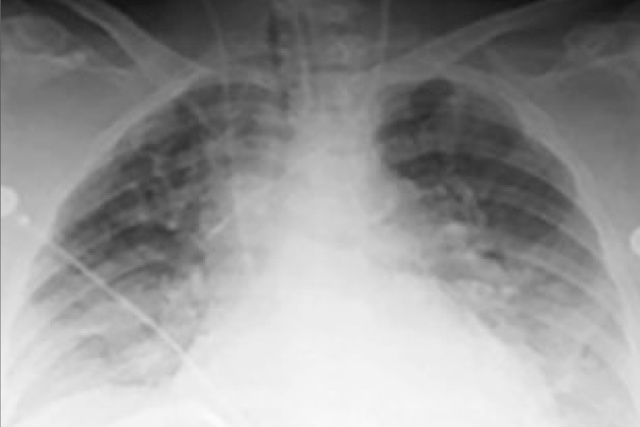Advanced Monitoring Parameters: ELWI
Extravascular lung water index (ELWI)
A pulmonary edema is characterized by an accumulation of fluid in the interstitium of the lung tissue and / or the alveoli. This leads to impaired gas exchange and may even cause pulmonary failure. The amount of the pulmonary edema can easily be quantified at the bedside by measuring the extravascular lung water index (ELWI). The usual clinical signs of pulmonary edema (white-out on the chest X-ray, low oxygenation index, decreased lung compliance) are non-specific and only indicative when the edema is at an advanced stage. In the critical care routine, the chest X-ray is often used to estimate pulmonary edema in patients at risk. This approach is imperfect as the chest X-ray provides only a black and white density image of all components in the chest, including gas volume, blood volume, pleural effusion, bones, muscles, lung tissue, fat, skin edema and also pulmonary edema.[1]

ELWI = 21 ml/kg
Severe pulmonary edema

ELWI = 14 ml/kg
Moderate pulmonary edema

ELWI = 8 ml/kg
No pulmonary edema
A more advanced approach using extravascular lung water provides a systematic route to therapeutic options. Extravascular lung water is indexed to the body weight in kg, written as the extravascular lung water index (ELWI). By indexing to the patient’s predicted body weight (PBW), underestimation of lung water, particularly in obese patients, is avoided.
